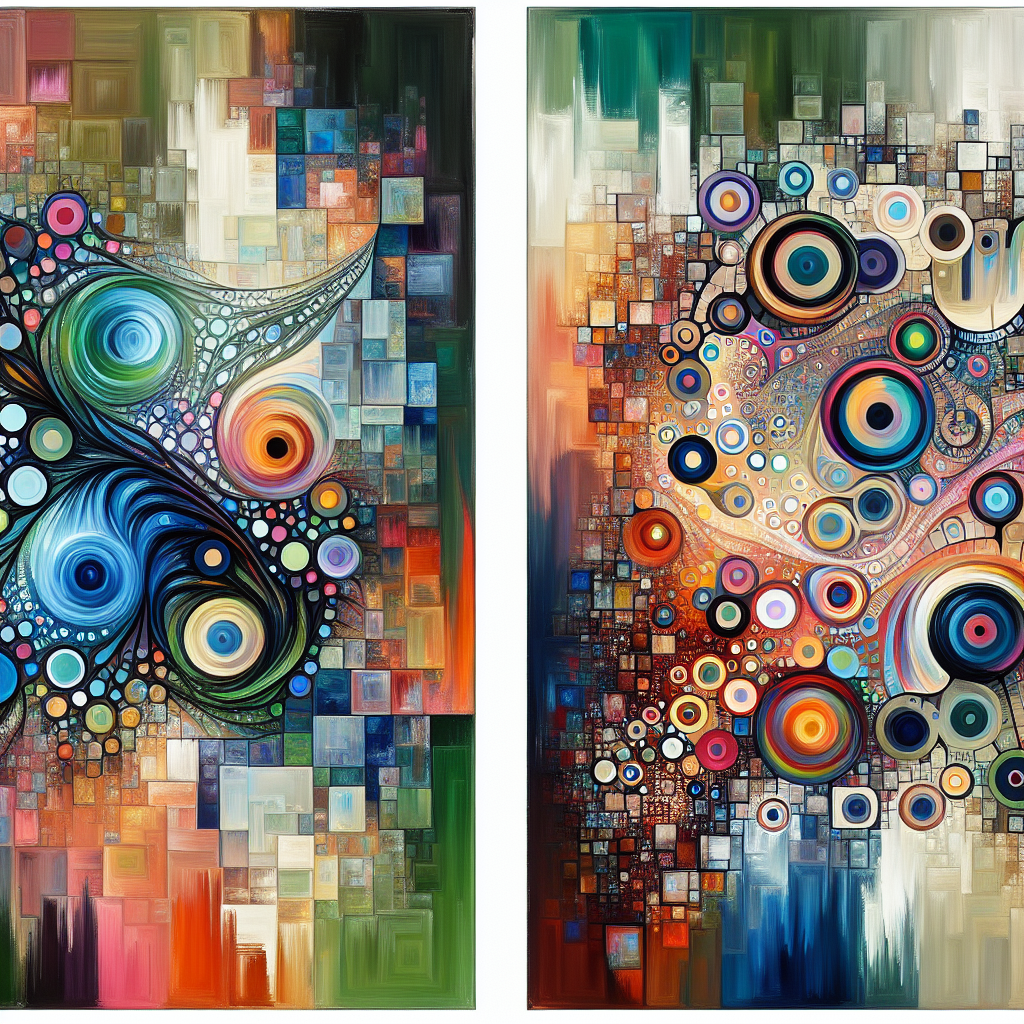Do you ever wonder how we can create realistic images, videos, or even music using artificial intelligence technology? Well, let me tell you about a fascinating concept called a generative adversarial network (GAN). A GAN is a type of machine learning model consisting of two parts: a generator and a discriminator. These two components work together in a competitive manner, continuously improving and challenging each other to produce remarkable results. In simple terms, the generator creates synthetic data, such as images, while the discriminator evaluates and distinguishes between the real and fake data. By engaging in this adversarial collaboration, GANs have revolutionized the field of AI by enabling us to generate incredibly authentic and lifelike content.

Understanding Generative Adversarial Networks (GANs)
Definition and Concept
A Generative Adversarial Network (GAN) is a type of artificial intelligence (AI) model that consists of two neural networks: a generator and a discriminator. The concept of GANs was proposed by Ian Goodfellow and his colleagues in 2014 and has since gained significant attention in the field of machine learning.
The main idea behind GANs is to train the generator network to generate realistic data samples, such as images or texts, that are indistinguishable from real data, while the discriminator network tries to distinguish between the real and generated samples. Through an adversarial training process, the generator and discriminator networks compete with each other, continually improving their performance.
How GANs Work
In a GAN, the generator network takes random noise or a latent vector as input and transforms it into a sample that mimics the distribution of the real data. The discriminator network, on the other hand, receives both real and generated samples and predicts whether each sample is real or fake. The generator aims to deceive the discriminator by generating realistic samples, while the discriminator aims to correctly classify the samples.
During the training process, the generator and discriminator networks are alternately updated. The generator receives feedback from the discriminator on how to improve its generated samples, while the discriminator learns to become more accurate in distinguishing between real and generated samples. This iterative training process continues until the generator produces samples that are almost indistinguishable from the real data.
Key Components of GANs
The key components of GANs include the generator network, the discriminator network, and the loss functions.
The generator network is responsible for transforming random noise or a latent vector into a realistic sample. It typically consists of multiple layers, such as convolutional layers in the case of image generation, and is trained to produce realistic samples that mimic the real data distribution.
The discriminator network is responsible for distinguishing between real and generated samples. It also consists of multiple layers and is trained to correctly classify samples as real or fake. The discriminator’s goal is to become an expert in distinguishing between real and generated samples, making it increasingly difficult for the generator to fool it.
The loss functions in GANs are used to guide the training process. The generator and discriminator networks each have their own loss functions. The generator’s loss function encourages it to generate samples that are classified as real by the discriminator. On the other hand, the discriminator’s loss function penalizes it for misclassifying real and generated samples.
Training a Generative Adversarial Network
The Training Process
Training a GAN involves an iterative process where the generator and discriminator networks are updated in a competitive manner. The training process consists of the following steps:
- Random noise or a latent vector is sampled as input for the generator.
- The generator generates a sample based on the input.
- The discriminator receives both real and generated samples and predicts whether each sample is real or fake.
- The discriminator loss is calculated based on its performance in classifying the samples.
- The generator loss is calculated based on how well it can deceive the discriminator.
- The gradients of the loss functions are used to update the weights and biases of both networks.
- Steps 1-6 are repeated iteratively to improve the performance of both networks.
Loss Functions
The loss functions used in GANs play a crucial role in guiding the training process. The generator loss and discriminator loss are calculated separately.
The generator loss is typically defined as the negative log-likelihood of the discriminator being mistaken. In other words, the loss encourages the generator to produce samples that the discriminator classifies as real. This drives the generator to generate samples that resemble the real data distribution.
The discriminator loss is calculated based on its ability to correctly classify real and generated samples. It penalizes the discriminator for misclassifying samples. The specific loss function used for the discriminator depends on the task at hand, but commonly used ones include binary cross-entropy loss.
Optimization Methods
To train a GAN effectively, appropriate optimization methods need to be employed. Gradient descent algorithms, such as Adam or RMSprop, are commonly used to update the weights and biases of the generator and discriminator networks based on the gradients of their respective loss functions.
It is also important to carefully select the learning rate and other hyperparameters to ensure stable and efficient training. Unstable training can lead to mode collapse, where the generator fails to explore the full range of the data distribution.
Challenges in Training GANs
Training GANs can be challenging due to several factors. One major challenge is achieving a balance between the generator and discriminator networks. If the generator becomes too powerful, it may produce samples that are too close to the real data, making it easy for the discriminator to classify them correctly. On the other hand, if the discriminator becomes too powerful, it may be too good at identifying generated samples, making it difficult for the generator to deceive it.
Another challenge is mode collapse, where the generator only produces a limited range of samples, ignoring other modes in the data distribution. This can result in generated samples that lack diversity.
Additionally, GANs are known to be sensitive to hyperparameters and the choice of architecture. Finding the right balance and architecture for a specific task requires experimentation and expertise.
Applications of Generative Adversarial Networks
Image Generation and Synthesis
GANs have revolutionized the field of image generation and synthesis. With GANs, it is possible to generate realistic images that resemble a specific data distribution. This has numerous applications in fields such as art, design, and entertainment. GANs can also be used for data augmentation, where additional training samples are generated to enhance the performance of other models.
Data Augmentation and Enhancement
In addition to image generation, GANs can be used for data augmentation and enhancement in various domains. By generating additional training samples, GANs can help improve the performance of models trained on limited datasets. GANs can also be used to enhance low-quality images by generating high-quality versions based on the available data.
Transfer Learning and Domain Adaptation
GANs can be utilized for transfer learning and domain adaptation tasks. By training a GAN on a source domain and then fine-tuning it on a target domain, it is possible to adapt the knowledge learned from the source domain to the target domain. This is particularly useful when labeled data is scarce in the target domain.
Text-to-Image Synthesis
GANs can be employed for text-to-image synthesis, where the generator is trained to generate images based on textual descriptions. This application has various potential uses, such as generating images based on textual prompts, helping visually impaired individuals understand textual descriptions visually, or aiding in virtual reality and gaming environments.
Video Generation
GANs can also be extended to the generation of videos. By training GANs on video datasets, it is possible to generate new video sequences that resemble the characteristics of the training data. This has applications in video editing, special effects generation, and content creation.
Advantages and Limitations of GANs
Advantages of GANs
One major advantage of GANs is their ability to generate highly realistic and diverse samples. This makes them invaluable in applications such as image synthesis, where generating new and unique images is desired. GANs also excel at tasks involving data generation and augmentation, allowing for enhanced model training with larger and more varied datasets.
Another advantage of GANs is their ability to learn unsupervised representations from data. Unlike traditional machine learning approaches that rely on labeled data, GANs can learn useful representations without the need for human annotations. This makes them efficient and versatile in tasks where labeled data is limited or expensive to obtain.
Limitations and Challenges of GANs
Despite their numerous advantages, GANs also face certain limitations and challenges. One major challenge is the instability of training. GANs are notoriously difficult to train, and finding the right balance between the generator and discriminator networks can be challenging. It often requires iterative experimentation and fine-tuning of hyperparameters.
Another limitation is the possibility of mode collapse, where the generator fails to capture the full diversity of the data distribution. This can result in generated samples that lack variation and resemble a limited subset of the real data.
GANs are also known to be computationally expensive and resource-intensive. Training GANs typically requires substantial computational power and time. Additionally, the quality of the generated samples depends heavily on the quantity and quality of the training data, making accurate and diverse generation more challenging in certain domains.

Recent Advancements in GANs
Conditional GANs
Conditional GANs (cGANs) are an extension of GANs that incorporate additional conditioning information into the generator and discriminator networks. By conditioning the generator on additional input variables, cGANs can generate samples that adhere to specific conditions or constraints. This enables more controlled and targeted generation in applications such as image synthesis.
Stacked GANs
Stacked GANs, also known as StackGANs, are a class of GANs that aim to generate high-resolution images. They achieve this by employing a multi-stage architecture, where a series of generator and discriminator networks are stacked together to progressively refine the generated samples. StackGANs have shown promising results in generating detailed and realistic images.
StyleGAN
StyleGAN is a recent advancement in GANs that focuses on controlling the style and specific attributes of generated samples. It allows for the generation of images with fine-grained control over various aspects, such as facial features in face synthesis. StyleGAN introduces a disentangled latent space, where different components of the latent vector control different attributes of the generated images.
CycleGAN
CycleGAN is a type of GAN that specializes in unsupervised image-to-image translation, where samples from one domain are transformed into samples of another domain without the need for paired training data. CycleGAN introduces cycle-consistency loss, which ensures that the translation between domains is consistent in both directions. This has applications in tasks such as style transfer and domain adaptation.
In conclusion, Generative Adversarial Networks (GANs) have emerged as powerful models in the field of artificial intelligence. With their ability to generate realistic and diverse samples, GANs have revolutionized image synthesis, data augmentation, and domain adaptation tasks. Despite their challenges in training and resource requirements, recent advancements such as conditional GANs, stacked GANs, StyleGAN, and CycleGAN have further expanded the capabilities of GANs and opened doors to exciting new possibilities in AI and machine learning.
